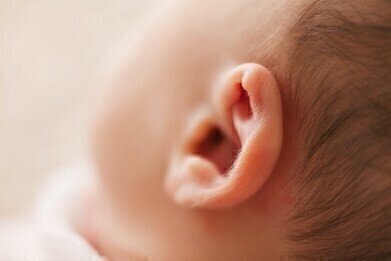GC, MDGC
What Can We Learn from Earwax? Chromatography Explores Your Ears!
Mar 03 2015
Ever wondered if that gunk that builds up inside your ears could tell any of your deepest, darkest secrets? No, us neither. But apparently, earwax is has defining traits which belong to specific races – including its dryness and smell – and even varies slightly from person to person.
Back in 2006, researchers found that a mutation in a single gene (chromosome 16) which goes into our DNA dictates whether our earwax is moist or dry. 80% to 95% of East Asians have dry earwax, while the vast majority (97% to 100%) of Africans and Europeans have moist earwax. East Asians have a genetic mutation which does not allow cerumen – the moist-making property – to enter into the stream of molecules which comprise earwax.
More Studies Reveal Added Info
A more recent study has revealed that this differentiation in the dryness of the earwax may also contribute to its smell – and to our general body odour. A team at the Monell Chemical Senses Center in Pennsylvania used the disciplines of gas chromatography and mass spectometry (GC-MS) to analyse the samples of 16 volunteers – eight of European descent and eight of Asian descent.
Before being analysed, the samples were baked in order to release their volatile compounds. These compounds were then analysed, separated and identified, and categorised into 12 different components which were present in the earwax of every subject tested. However, it was found that 11 of the 12 components were more prominent in the ears of European men, which were also linked to a stronger body odour smell.
Quite aside from sampling these subjects to test their earwax’s consistency and smell, the scientists believe that the results may help them to find out more about our constitutional makeups. Perhaps in the future, the information can reveal important data about our diets, physiology and environments, and could even be used to diagnose specific diseases.
The Animal Kingdom: The Analysis of Earwax (and other Unpleasant Body Functions)
Humans are not the only test subjects for earwax analysis. Back in 2013, a team of scientists at Baylor University in Texas examined the earwax of baleen whales and discovered some quite startling information.
It has long been known that the age of baleen whales can be determined by the amount of build-up of earwax in their ear canals, but the new study revealed that slight moderations and fluctuations in the hormones and the whale’s exposure to chemical elements are recorded in the aural gunk.
Furthermore, these fluctuations are actually documented in chronological order, meaning scientists can now have a precise idea of the evolution of a whale’s life and its environment.
Similarly revealing results were gleaned by examining another unpleasant bodily by-product in the animal kingdom – horse urine. The bioanalysis of dermorphin in equine urine proved the existence of pain-killing properties of artificial supplements given to racehorses. These supplements allowed the animals to push themselves beyond their pain threshold, potentially doing irrevocable damage to themselves. Due to the eye-opening analysis of horse urine, demorphin has now been banned as a substance in horse-racing.
Events
Mar 18 2025 Beijing, China
Mar 25 2025 Paris, France
Mar 31 2025 Beijing, China
Apr 02 2025 Saigon, Vietnam
Apr 22 2025 Kintex, South Korea














